
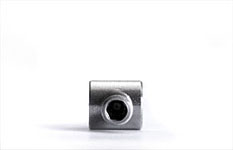 |
I have been applying this new 2-way truss rod since 2006. Because the majority of my guitars are finding the way overseas I regard it as very important that the truss rod functions in both directions. You can be sure that your birdfish can be set up perfectly either in extremely dry or in tropical environments. |
||
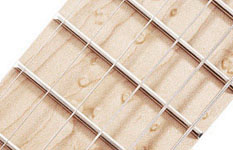 |
Have a close look at the joint. Can you locate it? Don't get confused by the shadows of the strings. In 2003 I began sealing the fingerboard on the top side to avoid the wood from getting dirty. The back of the neck is sealed but the pores are open. This gives the neck a natural feel. |
||
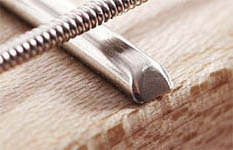 |
Each fret edge is rounded off and polished by hand. The fret slots end just before the neck edge so the frets can't stick out and affect playability during dry times in the winter.
|
||
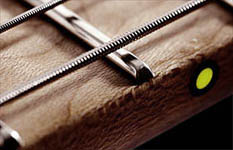 |
The fret markers are two-tone: outside there is a black circle for visibility under bright conditions. Inside I have included phosphorescent minerals to let the dots glow on a dark stage. | ||
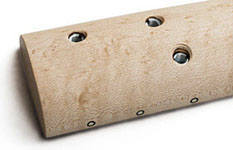 |
There are three threaded inserts that connect the neck solidly with the guitar through the neck screws. No overtightened screws anymore. The "bird" has got the same round back as the neck does, and this holds the neck in its position. |
||
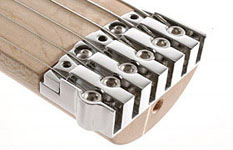 |
At the top end of the neck is a steel locking nut which locks each string seperately. The locking screws are made of extra durable stainless steel. I get them from a precision turning shop. For the price of six screws you could buy a whole Les Paul copy from China ex works. The ends of the string can be pressed into the little cavities behind the screws, so the string ends can't hurt you. The nut is height adjustable with little screws after fret dressing. The edge of the nut is adjusted to assure harmonic intonation. | ||
| copyright by Ulrich Teuffel | |||

